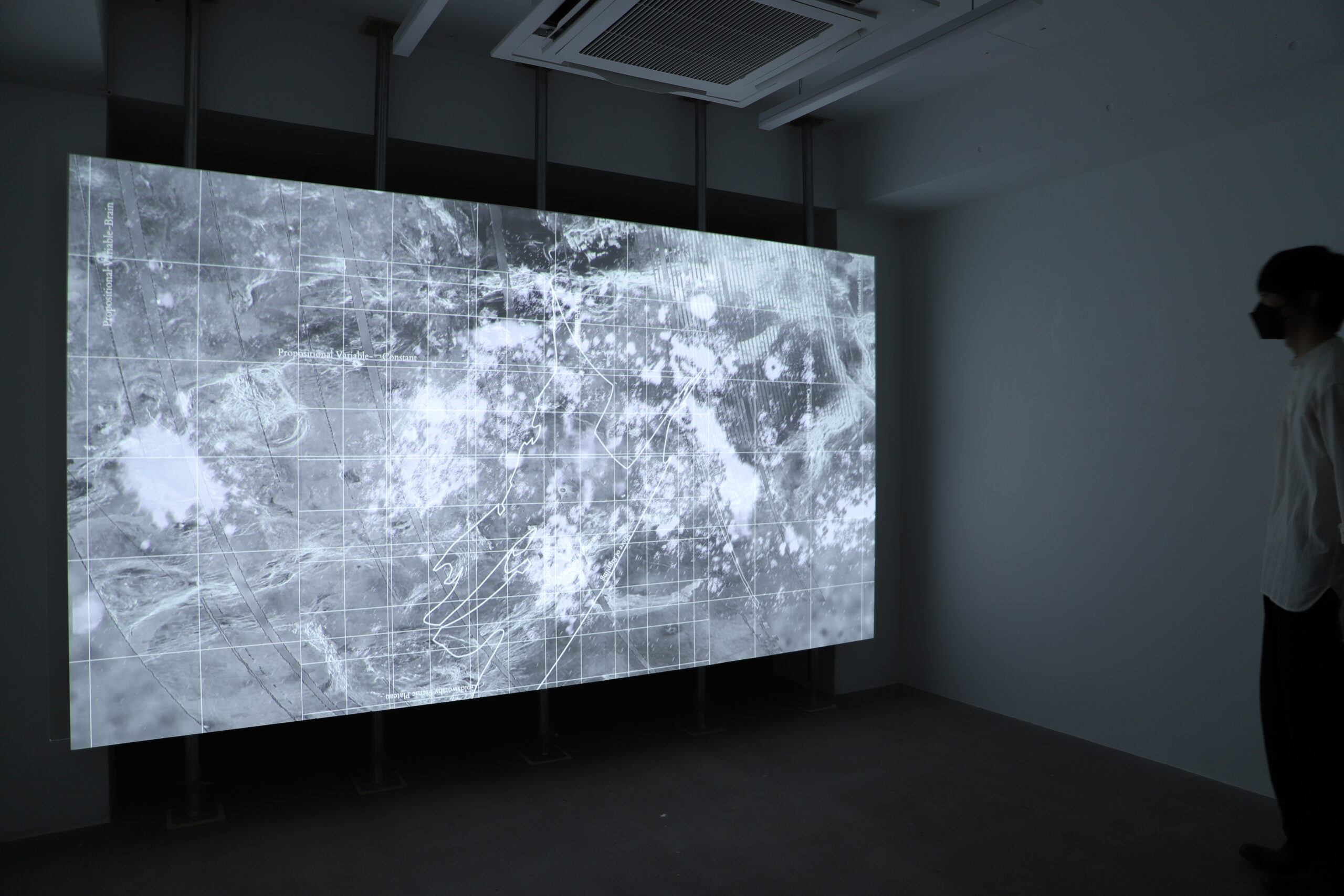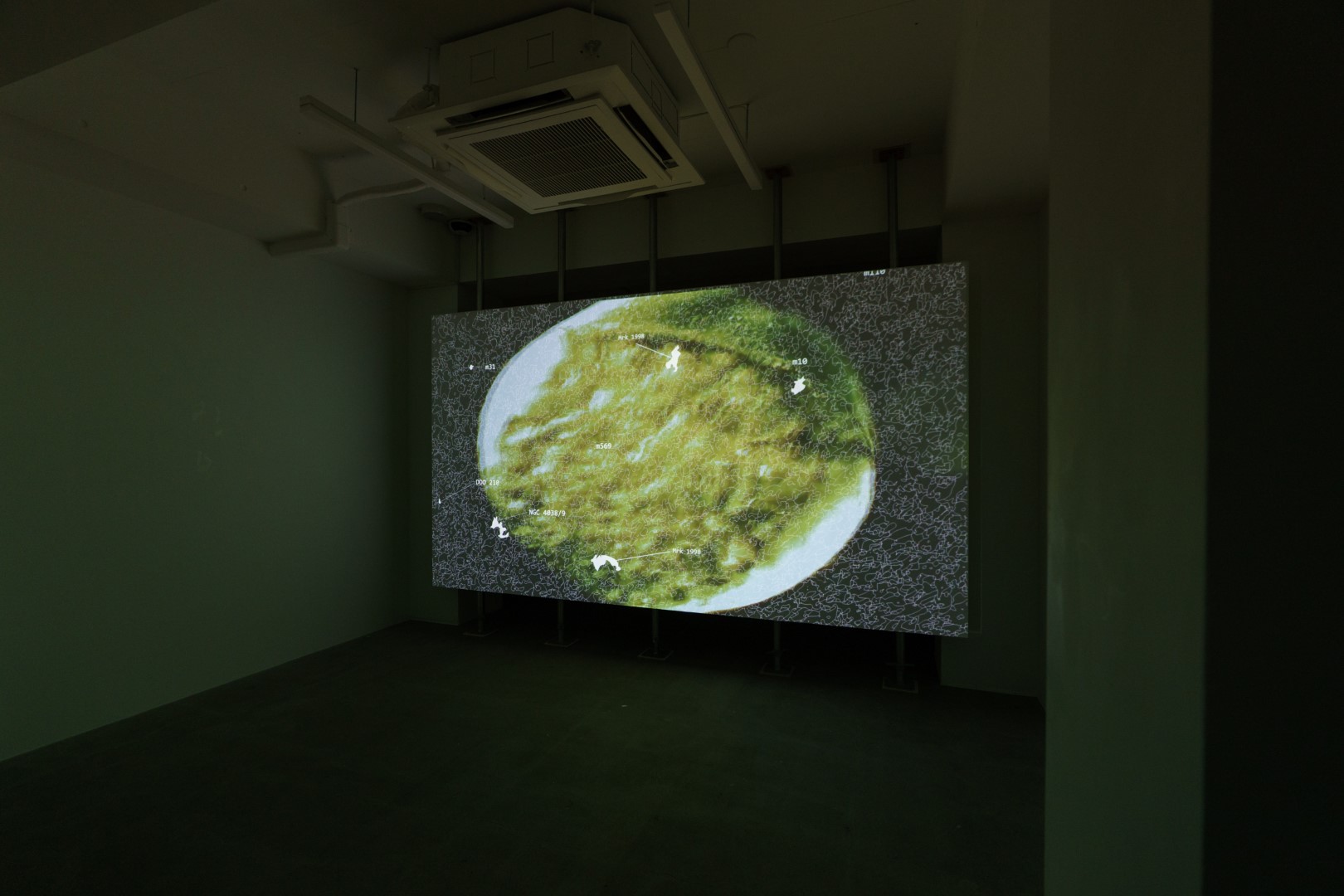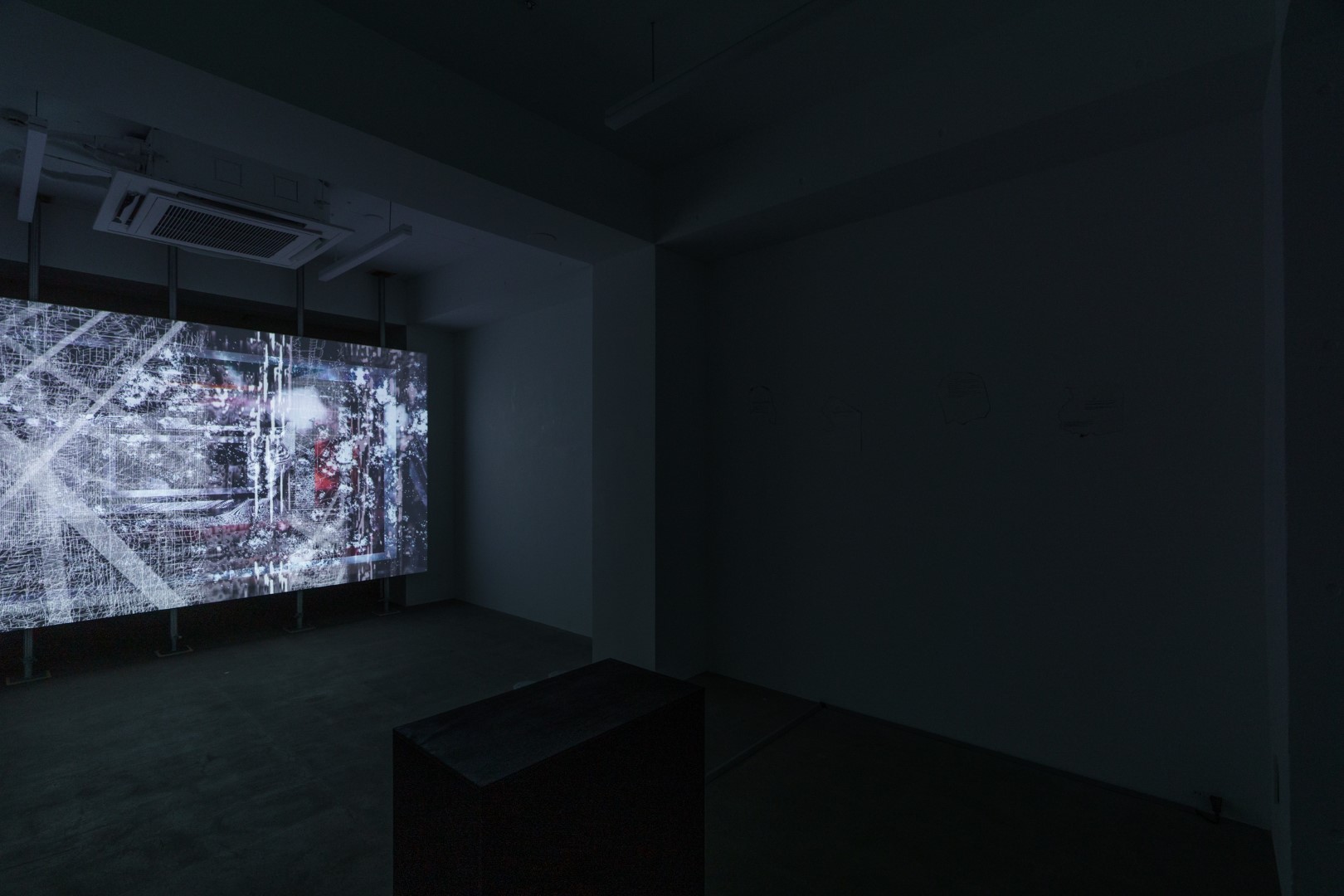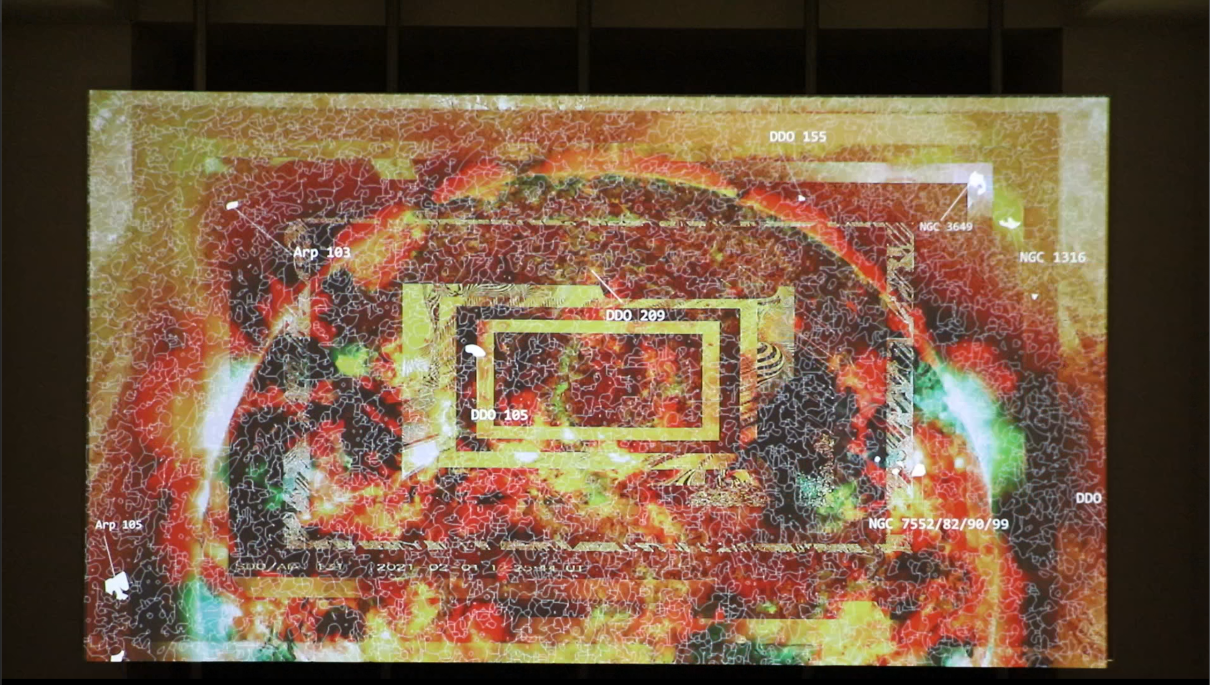Animortem of Pictorial Form: IV. Investigation
‘IV. Investigation’ and ‘V. Ossein’, created in 2023, were presented from 18-25 June 2023 at the gallery biscuit gallery in Shoto, Shibuya, Tokyo. The video and sculpture were separated in consideration of their combination in the exhibition space with the paintings by Daichi Igarashi, who participated in the exhibition with the artist. ‘IV. Investigation’ is the video part.
It is a projection of double-channel video (two sources of images) superimposed on a single screen, looping a 20-minute video that was also used in the previous work, Logical Images of Erasure, and a newly produced 20-minute video. The two videos with different durations are presented in constantly new overlapping ways.
The two videos are called ‘Map’ (20′ 45″) and ‘Dissection’ (13′ 00″) respectively.
‘The Map’ is a video of ‘Logical Images of Erasure’. The video combines several maps of different scales, which are slowly viewed on the map as if crawling around. One, for example, is the ‘Map of the Universe’. This is based on a map of electromagnetic radiation called the cosmic microwave background (CMB), which is observed equally from all directions on the celestial sphere. It serves as the most powerful theoretical basis for the Big Bang theory, which is now commonly accepted as the theory of the beginning of the universe. This map, which is similar to a thermographic camera, is said to originate from the period known as the ‘cosmic clearing’ (400 000 years after the Big Bang), when the universe became transparent to radiation due to the formation of hydrogen atoms from the combination of electrons and protons at 3,000 K, when the heat had decreased for a while after the Big Bang. I have been studying the history of the universe since the beginning of time. The CMB map suddenly became a map of galaxies. However, the CMB is not necessarily superimposed on the location of galaxies. The two are just the way the CMB looks, which happens to be nothing more than faint photons from a long time ago that can be observed from the Earth, and the galaxies that happen to be visible from the Earth in this position.
his image starts from the idea that ‘a map is also a painting’. In the history of painting, the concept of ‘copying reality as it is’ is actually only one of the movements that emerged in Europe during a limited period (of course, realistic expression has since been practised by artists from all over the world, but here it is positioned as just one of many means of expression). Even in the early art of human history, as seen in cave murals and ancient Greece, realistic expression may not have been practised simply because of a lack of skill. Primarily, the act of painting served to convey information by means of representations that were not realistic in themselves. Moreover, in such paintings, ‘false images’ and ‘lies’ that are counterparts to reality, expressions that could only exist in painting, are routinely used.
If the basic properties of these paintings can also be taken from the map, then the map is still a painting, even if the materials used are partially ‘real’. The way the materials are combined and the way a certain space is depicted cannot help but involve the intervention of the artist’s arbitrary judgement. Or, rather, it might be said that the recipient of the map – the viewer – gives the map a privileged objectivity.
The image explores an unusual map that deviates from everyday assumptions. After the map of the universe, what is shown is the ‘map of the planets’. This is based on aerial photographs of the surface of Venus. Overlaid on top of this are representations commonly found on Earth maps – grid lines, equator-like lines, tropic of Cancer and Tropic of Cancer, lines that seem to depict certain landforms, and their names – as if they were made to look like a map of Venus. In reality, however, it is only a map created by the author. The place names are the names of concepts that are the tools of Wittgenstein’s thinking, as well as terms from related fields. It can be described as a kind of thought map. The conceptual map of the work itself is embedded within.
Two other types of maps that have been used as source material include a map of a city in Colombia and an urban map used by the fire brigade in New York City. Each of these has been manipulated in certain ways to make them seem like just another map, but a fictional one.
Dissection dissects the structure of the world by extracting ‘similarities’ between micro and macro scales. Central to this is the observational image of the Sun.
Frame by frame, the film inserts images of the Sun taken from several types of electromagnetic waves, which are published daily on the web by the US National Aeronautics and Space Administration (NASA). The effect is like a flash, subliminally burning images of flares and sunspots onto the retina.
Interspersed with the sun are microscopic images of cells dividing and programme-generated images of a sea of clouds. Cell division is attached exactly the same value as the sun in between subliminal flashes.
The sea of clouds depicted by the Game of Life-based shader differs from the sun and cell division in that it is not a shadow cast by the lens and captured by the sensor. They are simply the result of procedural operations, given an initial value, that are born and disappear pixel by pixel. However, observers seem to find a kind of life-like movement in them, as if they were natural phenomena.
Differences and analogies in spatial scale, and analogies in movement.
Such an analogical structure can only be presented through moving images, which are paintings with time, in which scenes change instantaneously.




